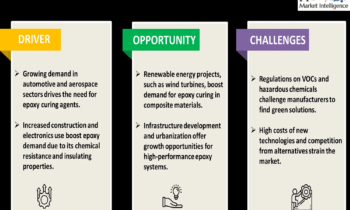When President-elect Joe Biden assumes power in the White House on January 20, 2021, he will usher in a new energy policy era in the United States.
With a commitment to rejoining the Paris Climate Agreement in the offing, all eyes are now on how this plays out for the price of oil. However, any shift toward greener energy is likely to be incremental and not as fast-paced as many would hope.
Though there have been limited rallies on the price of oil since the race for the presidency was called in Biden’s favor, the widely held expectation is of a downward trend in the long-term.
With incumbent Donald Trump somewhat reluctantly riding off into the sunset, Biden will take a far more internationalist approach than his predecessor. This multilateral diplomacy and real action on climate breakdown have far reaching implications for oil and gas, particularly if Washington sanctions are lifted.
How far Joe Biden’s administration can implement their priorities will largely depend on the legislation he can ram through in the face of GOP opposition. The bottom line in all of this will remain the necessity to obtain affordable gas at US filling stations.
Which factors will affect the price of oil in a Biden administration?
In keeping with previous Democrat presidents, Biden will wish to reverse Trump’s isolationism and reestablish the USA as the major player globally.
One big step the President-elect is widely expected to take is the eventual lifting of oil sanctions on Iran and Venezuela. Trump’s unilateral sanctions on the two OPEC member countries took about three million crude oil barrels off the international markets each day, around 3% of the world’s supply.
However, this will be tricky to achieve as both countries will be expected to meet certain conditions for the sanctions to be lifted. Major obstacles will have to be overcome with Iran. A new deal similar to that struck under the Obama government, involving European partners, seems the most likely way forward.
Venezuela is equally as problematic. While Biden may wish to continue sanctions against the South American country, he could resolve the current impasse by striking a deal with President Nicolas Maduro. This deal could involve either a fresh election or a power-sharing agreement with the opposition.
Saudi Arabia, meanwhile, is yet another factor coming into play that will ultimately influence the price of oil globally. The Arab country holds sway at OPEC. But it is unlikely Biden will be quite so friendly as Trump with its despotic de facto leader, Crown Prince Mohammed bin Salman.
For his part, the Biden team has not yet outlined their approach. However, historically American presidents have always gone into bat for the consumer to secure affordable fuel prices. Biden will almost certainly do the same but through diplomatic moves rather than Trump Twitter storms.
The price of oil is something of a balancing act for the incoming President. On the one hand, he wants reasonably moderate prices at the gas pumps. On the other, he needs to follow through on his commitment to reduce emissions and transform the United States into one of the world leaders in combating climate change. This conundrum means he needs to keep oil prices high enough not to damage the competitiveness of green energy alternatives that underpin his climate ambitions.
What are Biden’s emissions-cutting plans?
Firstly, a Biden administration will wish to re-enter the international Paris Climate Agreement, a pact brokered by Barack Obama to fight climate breakdown. Trump withdrew the US out of the agreement, claiming it would damage the US economy.
The President-elect is Trump’s polar opposite in this regard. Biden has vowed to get the US power industry down to net zero emissions by 2035. And the entire country to net zero before 2050.
Like many science-led observers, Biden views climate breakdown as an existential threat to the world. He believes that transitioning from fossil fuels represents a massive economic opportunity for the United States if it can move rapidly enough to become a world leader in the clean energy sector.
Over the last four years, many major US oil companies have stuck with their traditional business model, politically sheltered by a Trump White House. However, we can anticipate that a Biden administration will seek to reverse Trump’s weakening of emission targets in the future. Especially those for power plants and cars, which make up about half of US climate-changing emissions.
Trump’s embracing of the oil industry ran contrary to much of the world’s current sentiment. His ideas for the price of oil and the coal industry seemed hopelessly stuck in a 1970s mindset. He wantonly denied climate change as European oil companies such as BP and Shell began implementing their strategies to shift away from oil and gas to renewables.
What are the plans for oil drilling in the US?
Controversially, to some, Biden has promised to halt the issuance of any further drilling permits on federal land and waters. While Trump had ramped up domestic production of oil and gas, Biden is acting on behalf of the climate.
According to the Interior Department, almost three million barrels per day were produced from federal land and water in 2019. That total amounted to about a quarter of the domestic oil production. A ban of new federal permits will mean a downward trend over just a matter of years, with resultant consequences for the price of oil.
While such a ban would be good news for the climate, public revenues would take a substantial hit. Federal oil and gas revenues accounted for around $12 billion in 2019, split with the US Treasury, states, Native American bodies, counties, and various cleanup funds.
The Biden administration will likely come under pressure to issue waivers, particularly in more impoverished states where revenue loss would have a more significant impact.
Conclusion
Joe Biden has laudable ambitions to tackle climate change head-on. But it may prove more difficult than expected. With the blue wave failing to materialize, getting the necessary legislation to move America to a greener economy will require some hardcore bipartisanship.
Pivoting to renewables could face significant hurdles in both Congress and the Senate. The outcome, therefore, is probably a longer than expected reprieve for fossil fuels. This could well be enough to keep the price of oil reasonably stable in the short term. However, the trajectory in the long term will be downwards.



